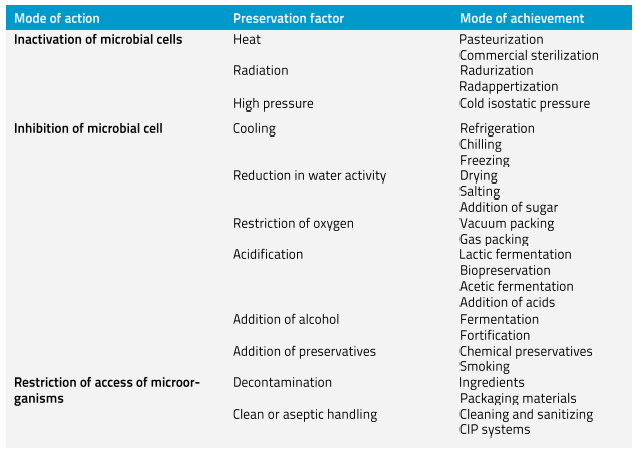Microbiological Aspects of Food Preservation and Safety Methods
Contents
- Introduction
- Heat Treatment & Preservation
- Food Irradiation
- High Pressure Food Treatment
- Preservation by Use of Low Temperature
- Antimicrobial Effects of Food Dehydration
- Chemical Preservation
1. Introduction
Microbiological hazards are one of the most significant causes of food poisoning. An understanding of these hazards is crucial to understanding how suitable controls may be applied. Modern food safety has its roots in food preservation methods. Initially these methods were applied to extend the shelf life of foods, and over time an understanding emerged that many of these methods had the effect of making food safer for human consumption. Today these methods of preservation and control are used widely in the global food sector as part of HACCP plans to consistently produce food for a mass consumption with high quality and safety.
In this white paper we will classify the main factors of food preservation and safety and drill down into the specific requirements for achieving safe food products. We will look closely at unit process operations such as heat, irradiation, high pressure, low temperature, freezing, dehydration, modified packaging and chemicals. A variety of preservation and safety factors and modes of action are used in modern food production. These are summarized in the following table. Their use and application depends on a number of factors including the food product, hazards, legislation, consumer and customer demands.
Inactivation of microbial cells includes methods which kill significant numbers if not all microorganisms within the food product and is usually irreversible. Examples of such process include heat preservation, radiation and high pressure processing. Inhibition of microbial cells does not usually affect a lethal kill of all microorganisms but rather inhibits the growth of these microbes. Restriction refers to the numerous pre-requisites of safe food production that are designed to maintain microbial hazards at a safe level within the production environment and to prevent their entry.
…

Leave a Reply
Want to join the discussion?Feel free to contribute!